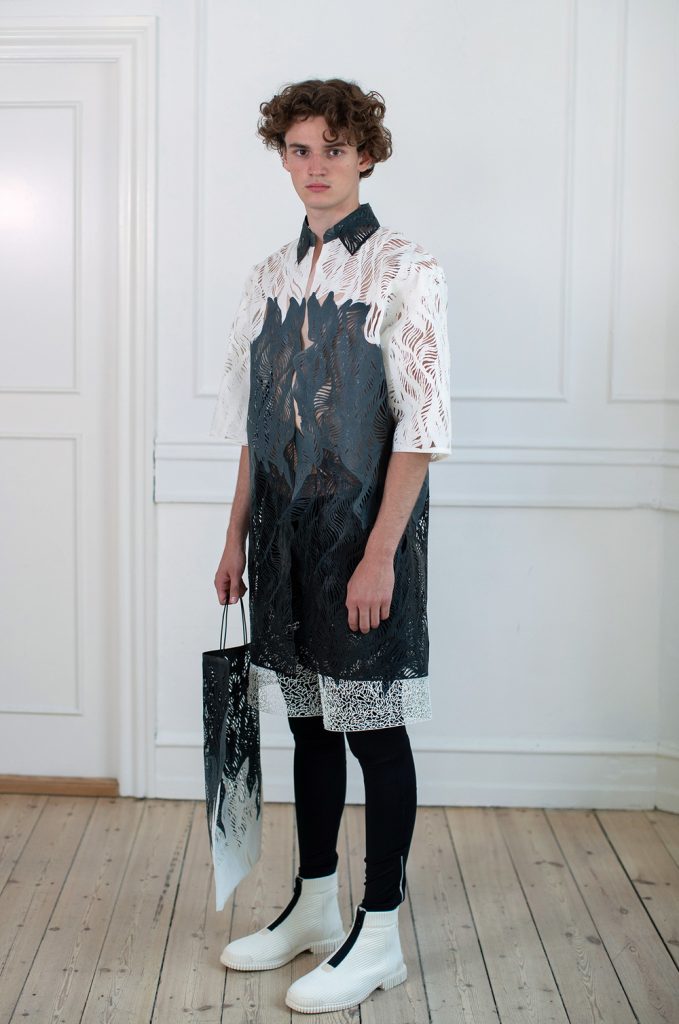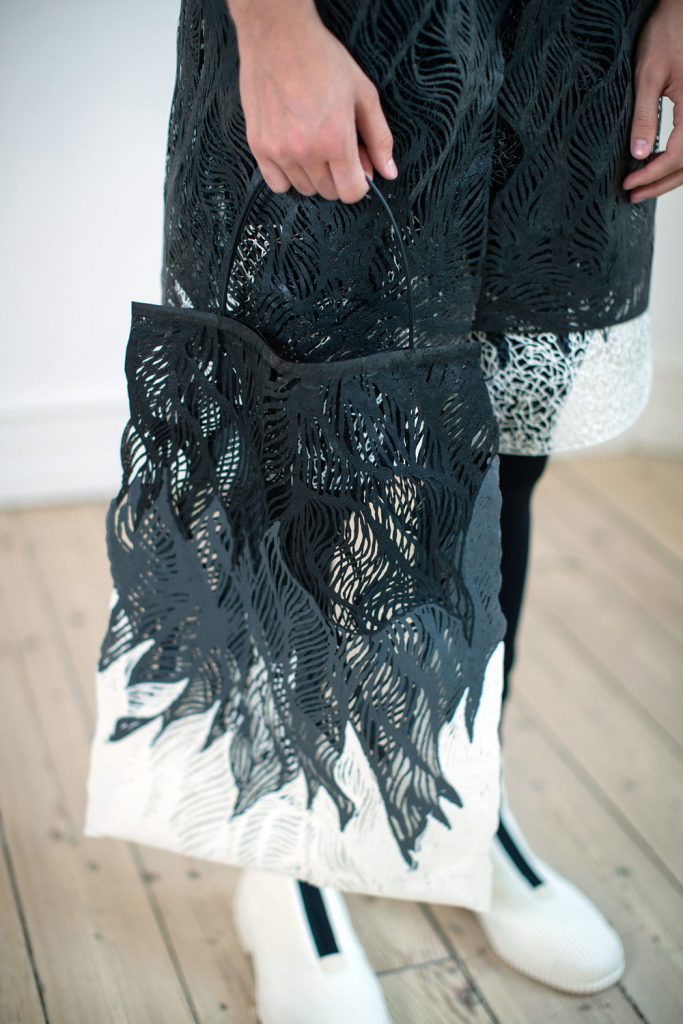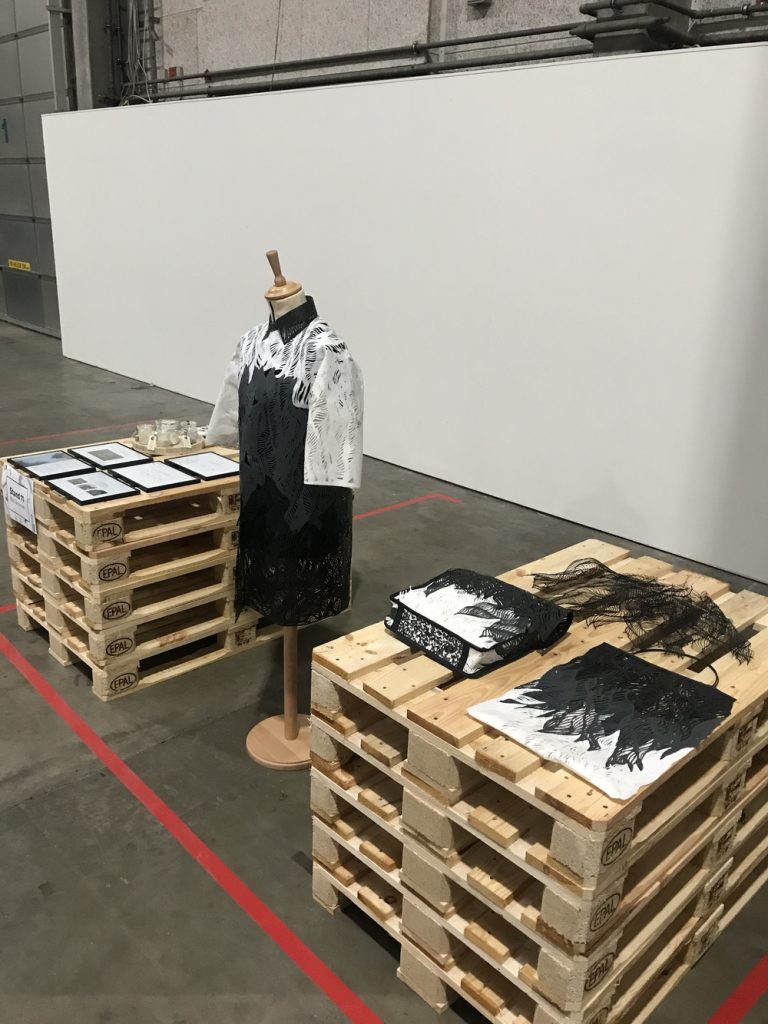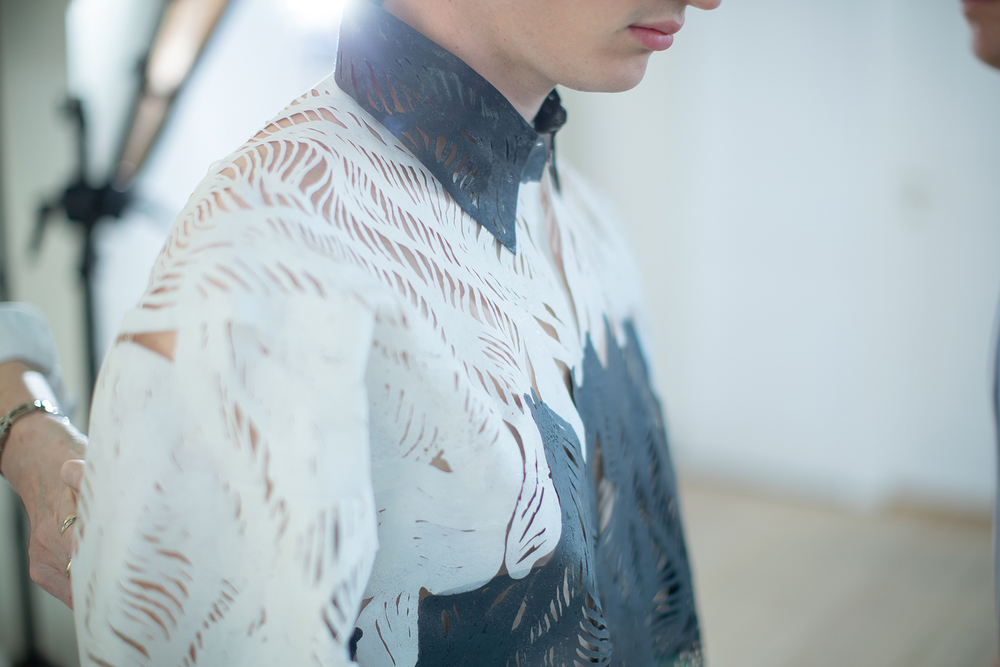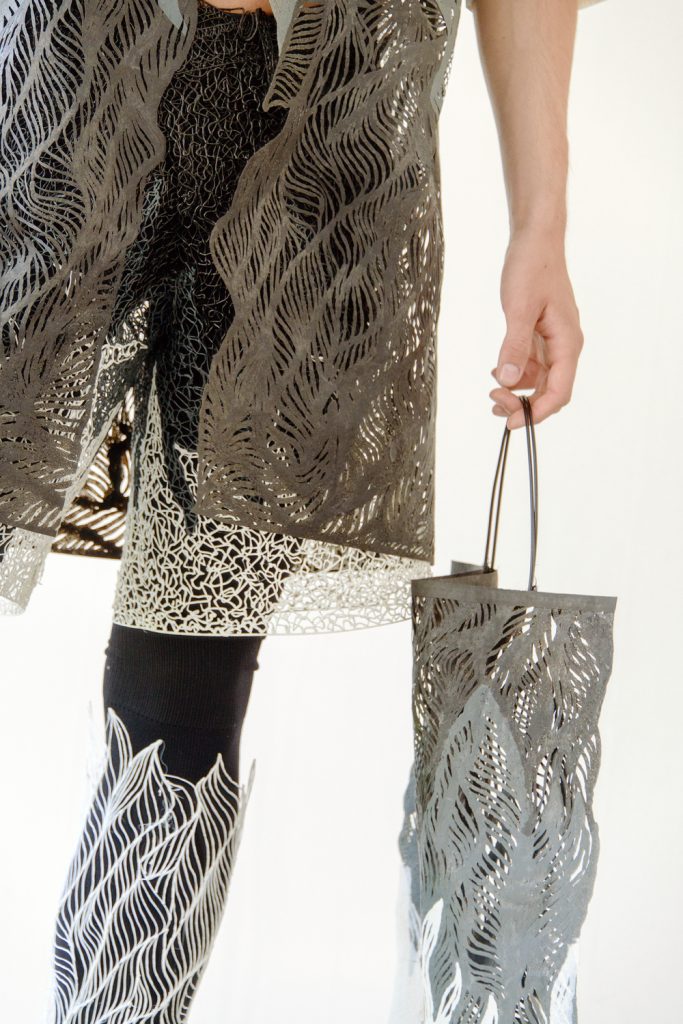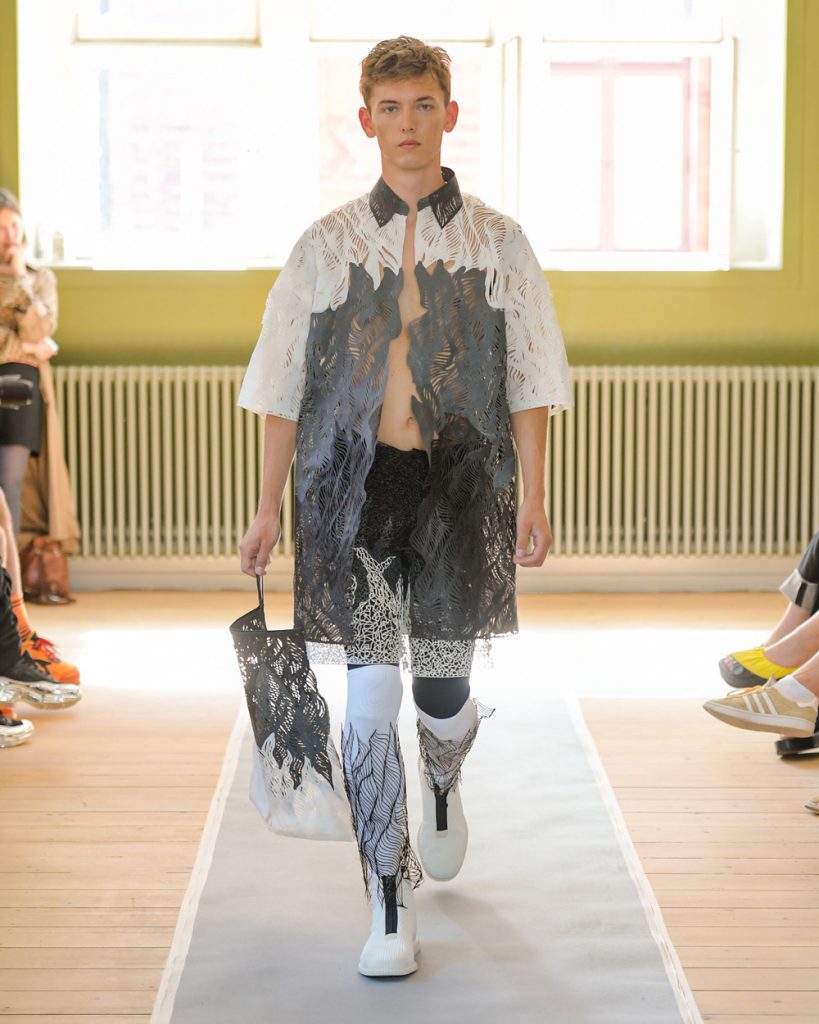Honorable Mention
Eureka
Exploring the potential of combining craft and technology through compostable organic materials
Solution
The fashion industry is one of the world’s most polluting industries. This could be changed, by looking at the production processes and the use of materials, where compostable bioplastic could gain entry into large parts of the industry. The project has been shaped through the use of 3D printing, and I have experimented with techniques, in flexible compostable filament and hand-shaped 3D print on-, and around textiles. Creating the worlds first 3D printed full compostable menswear outfit.
Project Description
The project refers to UN’s Sustainable Development Goals (no. 12), written that we have to ensure sustainable consumption and production patterns. This can be done by reducing the footprint on nature, by changing the way we produce and consume our goods and resources, and show the way for innovative compostable bioplastic solutions of the future. The fashion industry is already one of the world’s most polluting industries, and the way in which this could be changed, is by looking at our production processes and the use of materials, where compostable bioplastic could gain entry into large parts of the industry.
The outfits consist of a short-sleeved shirt, shorts and associated accessories such as bags, neck- and leg decorations. The base component in the material is non-GMO corn starch. This unique elastomeric bioplastic is made from compostable raw materials that have passed the U.S. (ASTM D6400) and E.U. (EN 13432) standards for compostability.
Overview of the Solution
The whole project is based on making the world a greener and better place. Therefore, I use my technique based on UN’s sustainable development goals, for example by trying to retain the climatic imprint in zero, using compostable materials, and at the same way, developing the design aspect from being two-dimensional to now being three-dimensional through technological thinking.
Up to this project, I had researched and tested the way 3D printing, it’s technology and it’s possibilities somehow could be integrated in the fashion industry, and I believe that the technology itself can make a big contribution to the fashion industry’s manufacturing processes in the nearest future. It was therefore natural for me to bring this technology into my solution as well as everything it entails, from the sustainable aspect to its potential in a fashion context.
The use of laser cut techniques and 3D printing has filled a great part of the project, and I have experimented with techniques, including 3D printing in flexible compostable filament and hand-shaped 3D print on, and around textiles. Innovation within the technological segment occupies a large part of my experimentation process in relation to this project, and the experimentation with 3D print have led to practical solutions, that can be used in a fashion and wearable interaction.
The result ended in an outfit and accessories, 3D printed menswear outfit in compostable flexible filament. The advantage of my product consists, among other things, of the production method and the exciting ability of the material. One thing is that the material can in principle be thrown into a forest and then dissolve within a few years. The other thing is that the material has comparable qualities and often include unique advantages provided direct from Mother Nature, and in this case, the flexible compostable bioplastic both relieve the waste stream, and improve the collection itself in a functional way. The flexible compostable bioplastic material is both heat resistant, cold resistant, which mean that it can maintain integrity at temperatures in excess of 100 C and retain its flexibility at – 15 C.
PROJECT TEAM
Mats Beckman
INSTITUTION
The Royal Danish Academy of Fine Arts, School of Architecture, Design and Conservation, Denmark
Category
Product
FACULTY/COURSE ADVISOR
Ann Merete Ohrt and Mathilde Aggebo
